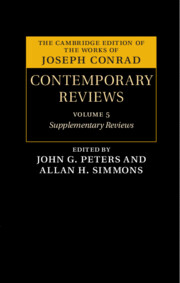214 results
Bringing together the World Health Organization's QualityRights initiative and the World Psychiatric Association's programme on implementing alternatives to coercion in mental healthcare: a common goal for action
-
- Journal:
- BJPsych Open / Volume 10 / Issue 1 / January 2024
- Published online by Cambridge University Press:
- 05 January 2024, e23
-
- Article
-
- You have access
- Open access
- HTML
- Export citation
Out-patient triple chronotherapy for the rapid treatment and maintenance of response in depression: Feasibility and pilot randomised controlled trial – ADDENDUM
-
- Journal:
- BJPsych Open / Volume 9 / Issue 6 / November 2023
- Published online by Cambridge University Press:
- 03 November 2023, e203
-
- Article
-
- You have access
- Open access
- HTML
- Export citation
Radiofrequency ice dielectric measurements at Summit Station, Greenland
-
- Journal:
- Journal of Glaciology , First View
- Published online by Cambridge University Press:
- 09 October 2023, pp. 1-12
-
- Article
-
- You have access
- Open access
- HTML
- Export citation
Associations between peripheral inflammation and clinical phenotypes of bipolar depression in a lower-middle income country
-
- Journal:
- CNS Spectrums / Volume 28 / Issue 6 / December 2023
- Published online by Cambridge University Press:
- 10 May 2023, pp. 710-718
-
- Article
-
- You have access
- Open access
- HTML
- Export citation
Reviews Of Within The Tides
-
- Book:
- Joseph Conrad: Contemporary Reviews
- Published online:
- 22 March 2023
- Print publication:
- 26 January 2023, pp 424-443
-
- Chapter
- Export citation
Contents
-
- Book:
- Joseph Conrad: Contemporary Reviews
- Published online:
- 22 March 2023
- Print publication:
- 26 January 2023, pp vii-xlii
-
- Chapter
- Export citation
Reviews Of The Shadow–Line
-
- Book:
- Joseph Conrad: Contemporary Reviews
- Published online:
- 22 March 2023
- Print publication:
- 26 January 2023, pp 483-505
-
- Chapter
- Export citation
Reviews Of The Inheritors: An Extravagant Story, With Ford Madox Hueffer
-
- Book:
- Joseph Conrad: Contemporary Reviews
- Published online:
- 22 March 2023
- Print publication:
- 26 January 2023, pp 110-120
-
- Chapter
- Export citation
Introduction
-
- Book:
- Joseph Conrad: Contemporary Reviews
- Published online:
- 22 March 2023
- Print publication:
- 26 January 2023, pp 1-5
-
- Chapter
- Export citation

Joseph Conrad: Contemporary Reviews
-
- Published online:
- 22 March 2023
- Print publication:
- 26 January 2023
Reviews Of Lord Jim
-
- Book:
- Joseph Conrad: Contemporary Reviews
- Published online:
- 22 March 2023
- Print publication:
- 26 January 2023, pp 84-109
-
- Chapter
- Export citation
Reviews Of ‘twixt Land And Sea
-
- Book:
- Joseph Conrad: Contemporary Reviews
- Published online:
- 22 March 2023
- Print publication:
- 26 January 2023, pp 343-363
-
- Chapter
- Export citation
Reviews Of Tales Of Unrest
-
- Book:
- Joseph Conrad: Contemporary Reviews
- Published online:
- 22 March 2023
- Print publication:
- 26 January 2023, pp 62-83
-
- Chapter
- Export citation
Reviews Of Tales Of Hearsay
-
- Book:
- Joseph Conrad: Contemporary Reviews
- Published online:
- 22 March 2023
- Print publication:
- 26 January 2023, pp 705-732
-
- Chapter
- Export citation
Reviews Of The Secret Agent: A Simple Tale
-
- Book:
- Joseph Conrad: Contemporary Reviews
- Published online:
- 22 March 2023
- Print publication:
- 26 January 2023, pp 238-268
-
- Chapter
- Export citation
Reviews Of Under Western Eyes
-
- Book:
- Joseph Conrad: Contemporary Reviews
- Published online:
- 22 March 2023
- Print publication:
- 26 January 2023, pp 294-311
-
- Chapter
- Export citation
Reviews Of Falk, Amy Foster, To–Morrow: Three Stories
-
- Book:
- Joseph Conrad: Contemporary Reviews
- Published online:
- 22 March 2023
- Print publication:
- 26 January 2023, pp 170-180
-
- Chapter
- Export citation
Reviews Of The Rover
-
- Book:
- Joseph Conrad: Contemporary Reviews
- Published online:
- 22 March 2023
- Print publication:
- 26 January 2023, pp 633-688
-
- Chapter
- Export citation
Acknowledgments
-
- Book:
- Joseph Conrad: Contemporary Reviews
- Published online:
- 22 March 2023
- Print publication:
- 26 January 2023, pp xlvii-xlviii
-
- Chapter
- Export citation
Reviews Of Last Essays
-
- Book:
- Joseph Conrad: Contemporary Reviews
- Published online:
- 22 March 2023
- Print publication:
- 26 January 2023, pp 771-801
-
- Chapter
- Export citation




